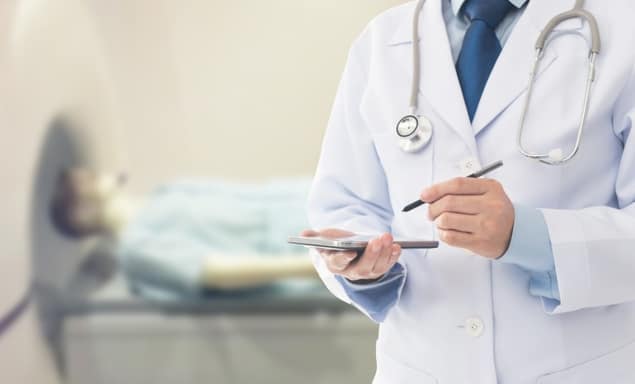
In treatment of acute stroke, rapid and precise clinical assessment is essential to minimize long-term damage. Stroke may be ischaemic or haemorrhagic, and the appropriated treatment will depend on the patient’s diagnosis. In cases where a hospital with a stroke centre may not be nearby, the smartphones and mobile devices used by neuroradiologists represent a potential lifeline for patients with acute stroke symptoms. Both have been in use for telestroke head CT assessment for nearly a decade to make urgent diagnoses. However, governmental regulatory approval of this use varies among countries.
A team of radiologists and neurologists in Bogotá, Columbia, hope that regulatory agencies in resource-constrained countries will acknowledge the diagnostic capabilities of today’s smartphones and mobile devices. They conducted a detailed study comparing the diagnostic performance of a smartphone (Samsung Galaxy S8 Plus) and a laptop (Lenovo ThinkPad T460S) with a routine reading system: a medical workstation with Agfa IMPAX 6.5 PACS software. The smartphone and the laptop both had teleradiology viewer software (Agfa XERO Viewer 3.0) installed (J. Am. Coll. Radiol. 10.1016/j.jacr.2019.04.001).
The case cohort included 188 patients with symptoms of acute stroke admitted to the emergency department of the University Hospital Fundación Santa Fe de Bogotá between 2013 and 2018. This included 25 patients with haemorrhagic lesions, 49 with ASPECTS (Alberta Stroke Program Early CT Score) lower than six, 55 with hyperdense middle cerebral arteries (MCAs), 122 with MCA- or posterior circulation (PC)-territory ischemic lesions, and 68 with an acute ischemic lesion involving the MCA territory.
Four experienced neuroradiologists reviewed the cases using the three reading systems — the PACS diagnostic workstation, the laptop and the smartphone — collectively performing 2256 head CT interpretations. All readers had access to all relevant clinical data for each patient.
For each patient, the radiologists evaluated:
- whether a case was haemorrhagic or not;
- for non-haemorrhagic cases, the observer’s confidence in the presence of an ischemic lesion in the anterior cerebral artery (ACA), in the MCA and in the PC territory;
- confidence in the presence of a hyperdense MCA and the presence of hyperdense PC arteries;
- (in cases with high confidence of the presence of an ischemic lesion) whether the event is acute, subacute or chronic;
- (in cases with acute ischemic lesions) the ASPECTS;
- the presence of intra-axial neoplasms and any other imaging findings.
For each variable, the authors evaluated the sensitivity, specificity and area under the receiver operator characteristic (ROC) curve. They also performed analyses of variances.
Lead author Antonio Salazar, of the University of Los Andes, and co-authors reported that the shapes of the ROC curves were very similar for all of the reading systems, indicating similar observer performance. There was equivalent accuracy among the devices at a threshold of 10% for all the diagnostic criteria and at a 5% threshold for haemorrhagic lesions, hyperdense MCA, and acute ischemic lesions in the MCA territory. The authors note that there was no more than 30 s difference between the reading time of the mobile devices compared with the medical workstation.
Telestroke programmes
Data have not been published about the number of radiologists who make urgent remote diagnoses of stroke from head CT scans viewed on smartphones or mobile tablets. Two pioneering telestroke programmes, one launched at the University of Calgary and the other at Mayo Clinic-Arizona, helped legitimize smartphone use for this application in 2011 and 2012.
Researchers at both institutions independently conducted retrospective studies comparing neuroradiologists’ interpretations of non-contrast CT brain scans using a PACS diagnostic workstation and a smartphone. Both teams determined that the sensitivity, specificity and accuracy of detecting intraparenchymal haemorrhage were each 100% and that inter-rater agreement was excellent. However, the Mayo researchers acknowledged that their study was conducted without the pressures and time constraints of a real-world stroke emergency. The Calgary team recommended that additional research be conducted.
A Mayo clinic spokesperson confirmed that mobile devices are currently used when needed as part of its telestroke programme. The analysis by Salazar and colleagues provides a current comparison of diagnostic capabilities of the latest technology utilized in 2019 smartphones.



